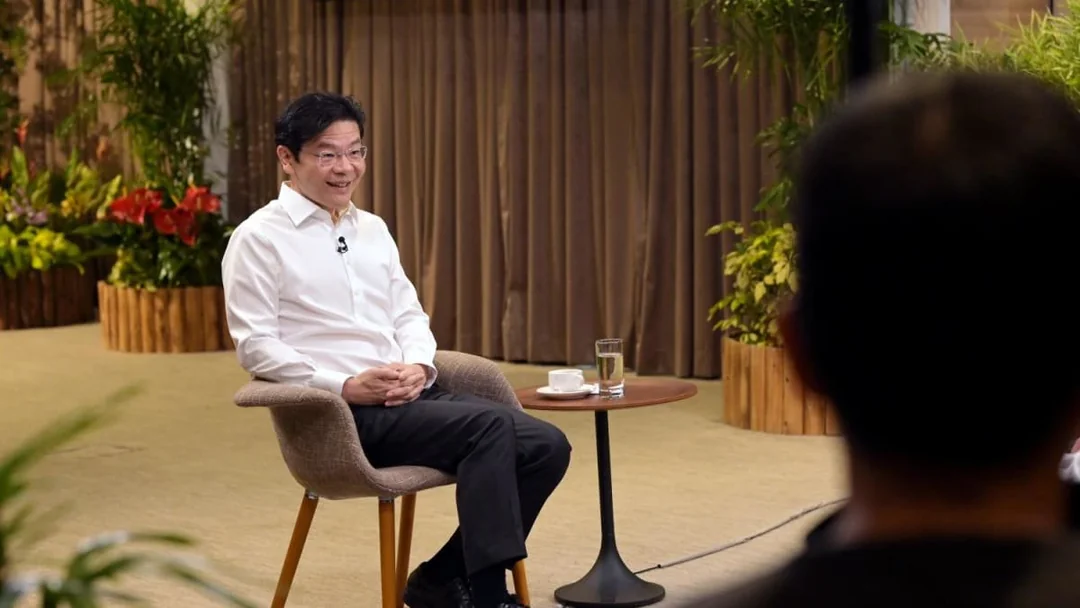The global geopolitical landscape is undergoing a profound and enduring transformation, characterized by intensified competition between major powers, primarily the United States and China. As articulated by Singapore’s Prime Minister Lawrence Wong, these tensions are not transient but represent a “new normal” that will persist for the foreseeable future. This report analyzes the multifaceted nature of this rivalry, its deep-seated drivers, far-reaching economic ramifications, and the adaptive strategies employed by nations, particularly those in Southeast Asia, to navigate this increasingly fragmented world.
The New Normal of Great Power Competition
Singapore’s Prime Minister Lawrence Wong’s recent pronouncement that “tension between major powers are concerning, and going to stay here for a long time” encapsulates a widely recognized shift in international relations. This statement, delivered during the S. Rajaratnam Lecture 2025, underscores the profound and structural nature of the current geopolitical environment. Singapore, a small city-state that thrived by integrating into a stable, rules-based global system, views this shift with “deeply worrying” apprehension. Singapore’s historical success as a vibrant, modern, and globally respected nation was built on its ability to defy expectations despite having “no natural resources, no hinterland, no means of defence,” a vision that flourished because of the global environment of cooperation, rules, and stability.
Economic Implications: Decoupling and Bifurcation of the Global Economy
The Escalating Trade War and Economic Statecraft
Since 2018, beginning with the first Trump Administration’s aggressive trade policies, US-China trade tensions have escalated significantly, fundamentally reshaping global trade, supply chains, and economic alliances. The initial wave of US tariffs targeted USD 50 billion worth of Chinese goods, escalating to over USD 360 billion by 2019. China retaliated by introducing its own tariffs on US products, negatively impacting American agriculture and manufacturing. Former US President Donald Trump’s consistent belief in tariffs, which he famously called “the most beautiful word in the vocabulary,” was a significant driver of these policies. The wide-ranging tariffs announced on April 2, described as “Liberation Day,” were characterized as the “biggest shock that the global trading system has ever faced”. While the Biden administration has largely maintained these Trump-era tariffs, it has shifted its focus. Following Trump’s inauguration in 2025, his administration imposed a new 10 percent tariff on Chinese imports, further escalating economic tensions over trade imbalances, intellectual property concerns, and supply chain security.
Prime Minister Lawrence Wong explicitly states that economic instruments like tariffs, export controls, and sanctions are now being used “not for market purposes, but as instruments of statecraft to advance national interests”. This marks a fundamental shift in their application, moving beyond traditional trade policy to serve broader geopolitical objectives. This signifies a strategic decision to weaponize economic interdependence. Both the US and China are leveraging their economic strengths—such as the US’s financial centrality and China’s dominance in critical minerals—to exert pressure and achieve national security objectives. This transformation moves beyond traditional trade disputes to a systemic re-ordering of economic relations based on strategic competition, implying that economic vulnerabilities, such as reliance on specific supply chains or technologies, are now strategic liabilities. This weaponization means that economic decisions are increasingly politicized, making it difficult for businesses to operate purely on market logic and necessitating a fundamental re-evaluation of global business models and supply chain resilience.
The US has enforced stringent export controls on critical technologies such as semiconductors, artificial intelligence (AI), and quantum computing, aiming to curb China’s access to advanced capabilities vital for AI and military applications. In response, China has ramped up domestic chip production and restricted exports of critical minerals like gallium and germanium, which are crucial for US and European technology firms. Increased scrutiny of Chinese firms, including new AI models and the popular social media platform TikTok, is also evident as part of this broader technological competition.
Reshaping Global Trade and Supply Chains
The intensifying economic rivalry is profoundly reshaping global trade and supply chains. The US and China are entering a “full-blown trade war,” which is expected to accelerate the decoupling of their economies. Prime Minister Wong foresees the global economy being remade “not as one integrated system, but as increasingly bifurcated ecosystems centred around America and China”. This suggests a fundamental restructuring of global economic architecture.
Companies are actively reassessing their supply chain dependencies and shifting operations out of China to countries like India, Vietnam, and Malaysia. This “China+1” strategy is driven by the desire to diversify and reduce reliance on a single production hub, especially given geopolitical tensions and the disruptions exacerbated by the COVID-19 pandemic. Concerns persist, however, about Chinese firms using third countries like Mexico to circumvent US tariffs.
The shift towards “bifurcated ecosystems” and supply chain reconfigurations indicates a fundamental re-prioritization. For decades, global supply chains were optimized primarily for efficiency and cost. Now, geopolitical risks and national security concerns are driving a premium on resilience and diversification, even if it means higher costs. This is evident in the increased scrutiny of Chinese firms relocating production to third countries to circumvent tariffs. This implies a long-term structural change in global manufacturing and trade patterns, which will likely lead to higher production costs, potential inflationary pressures, and a less efficient global economy, but one that is ostensibly more secure from a national security perspective.
The impact extends to critical minerals and clean energy sectors. Chinese export controls on critical minerals, including rare earth metals, will primarily affect foreign companies, potentially curtailing access or causing disruptions due to export license delays. The clean energy technology industry is particularly impacted, with shifts in lithium-ion battery exports (25% of China’s exports went to the US in 2024) and solar panel production, where Chinese components are used in Southeast Asian exports to the US. Chinese firms are actively diversifying markets and localizing production globally to access new customers and circumvent restrictions, particularly in Asia and Latin America, where demand for affordable clean energy technologies is high.
Economic Implications of US-China Rivalry on Global Trade and Supply Chains
| Aspect | Description & Details |
|---|---|
| Impact on Trade | – Escalating tariffs imposed by both US (e.g., up to $360B by 2019, new 10% tariff in 2025) and China, leading to decline in bilateral trade. |
| – Increased uncertainty for businesses globally due to unpredictable policy shifts. | |
| Supply Chain Reconfiguration | – Shift towards “bifurcated ecosystems” centered around America and China. |
| – Adoption of “China+1” strategies, relocating production out of China to countries like India, Vietnam, Malaysia, and Mexico. | |
| – Concerns about Chinese firms using third countries to circumvent US tariffs. | |
| Technology & Critical Minerals | – US export controls on semiconductors, AI, and quantum computing to curb China’s access to advanced tech. |
| – China’s retaliation with restrictions on critical minerals (gallium, germanium, rare earths) and ramped-up domestic chip production. | |
| – Impact on clean energy sectors, including lithium-ion batteries and solar panels, with Chinese firms diversifying markets and localizing production globally. | |
| WTO & Global Governance | – “Reciprocal” tariffs represent a fundamental rejection of WTO rules. |
| – Preference for bilateral negotiations and unilateral measures over multilateral frameworks. | |
| – Increased pressure and marginalization for smaller countries due to limited bargaining power. |
Likely Scenarios
The most likely scenario for the future is a “further intensification of U.S.-China competition” in Southeast Asia and globally. While the likelihood of a “full-blown global trade war is growing” , a “proxy war” is considered less likely, and an easing of competition is deemed “least likely”. The world remains in a “messy transition” to an unknown future. As economic ties fray, “other aspects of the US-China relationship will come under greater strain. Trust will erode further. Tensions will rise across multiple domains”.
Recommendations for Nations, International Institutions, and Businesses to Navigate Geopolitical Tensions
Navigating the enduring geopolitical tensions and the resulting fragmented global order requires a multi-faceted approach from all key actors.
For Nations:
- Strengthen Domestic Resilience: Nations must invest deeply in internal cohesion, economic diversification, robust social safety nets, and innovation. This is crucial for withstanding external shocks and ensuring the well-being of their citizens. This includes preparing for dislocations stemming from recessions, interruptions in supply lines, and the transformative impacts of technological advancements like AI and robotics on employment.
- Active Strategic Autonomy/Hedging: Pursue diversified partnerships beyond the major powers, engaging with entities such as the European Union, Japan, and various regional blocs. This strategy involves actively engaging with both the US and China where national interests align, without committing to one side, thereby balancing economic ties with security concerns.
- Bolster Regional Cooperation: Deepen intra-regional initiatives, such as those within ASEAN and the Regional Comprehensive Economic Partnership (RCEP), to enhance collective bargaining power, promote economic integration, and foster regional stability.
- Advocate for Rules-Based Order: Despite the fraying of the existing order, continue to advocate for and actively participate in the reform of multilateral institutions like the WTO. This is essential to preserve a semblance of global governance and ensure fair play, which is particularly beneficial for smaller states.
- Re-examine Strategic Assumptions: Be prepared for a world where external assistance might not arrive in time. This necessitates intensified debates on bolstering national defense capabilities and even discussions, once considered taboo, about acquiring nuclear weapons, as seen in Japan and South Korea.
For International Institutions:
- Adapt to a “Dual Order”: Recognize that a purely integrated global system is unlikely to return. Institutions should explore mechanisms for managing competition and fostering issue-based cooperation even amidst rivalry, such as collaborative efforts to combat transnational threats like scam networks.
- Reform and Modernize: The WTO and other global governance bodies require significant reform to address the challenges posed by economic statecraft, the weaponization of interdependence, and the increasing preference for bilateral and unilateral measures by major powers.
- Facilitate Dialogue: Continue to provide platforms for dialogue, including unofficial “track 2” channels, to build understanding and de-escalate tensions. Effective negotiations often require the development of personal relations between empowered officials, which these platforms can facilitate.
For Businesses:
- Diversify Supply Chains: Move beyond purely efficiency-driven models to prioritize resilience, diversification, and security in supply chain management. This may involve developing regionalized production hubs or adopting “China+1” strategies to reduce single-point dependencies.
- Integrate Geopolitical Risk Assessment: Incorporate geopolitical risk into strategic planning and investment decisions. Businesses must understand that economic decisions are increasingly politicized and subject to statecraft, requiring a more nuanced approach than traditional market logic.
- Localize and Diversify Markets: Explore new markets and localize production to reduce reliance on single regions or major power orbits, particularly in critical sectors like clean energy technology where export controls and tariffs are prevalent.
- Monitor Regulatory Landscape: Stay abreast of evolving tariffs, export controls, rules of origin, and increased scrutiny on internationalized value chains, as these policies can change rapidly and unpredictably, directly impacting operations and profitability.
Navigating the enduring geopolitical tensions and the resulting fragmented global order requires a multi-faceted approach from all key actors.


